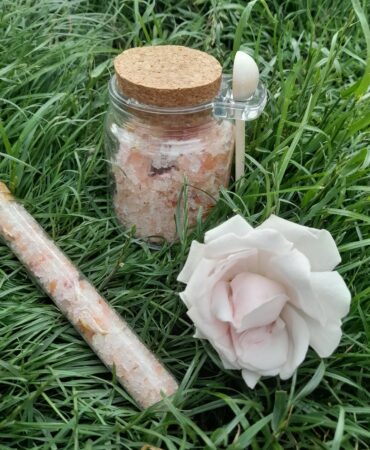Currently Empty: £0.00

A Rainbow Of Colour From The Garden
Happy weekend all! This weekend, Plants and Colour gives us a run down of natural pigments and how they are extracted from plants, touching also on their different natures. Able to be foraged or grown in UK gardens, Flora provides us with an exciting inventory of plants (including herbs) ready to become our next craft fix. Get ready to be inspired.
Written by Flora Arbuthnott
Most plants that are growing around us will give some colour. The majority of plants give pale yellow or beige, or brighter colours that fade to yellow and beige. The plant that give vibrant blues, purples, and red have been historically very precious and prized, leading these to become colours of status and power. Greens are also rare to obtain because, although greens are very abundant in nature, these colours are difficult to fix on to cloth because most green colours come from chlorophyll. Chlorophyll is the molecule active with photosynthesis, which is the basis for sustaining the life processes of all plants. The chlorophyll breaks down easily, that is why leaves turn to brown, orange, yellow, red in the autumn. These are the colours of the minerals in the leaves that are more stable than chlorophyll so become visible as the chlorophyll breaks down.
I am going to take you through a rainbow of dye plants you can grow or forage in the UK for vibrant distinctive colours. Each plant and type of fabric you work with requires a different process depending on how readily the plant will release colour and how readily the fabrics will bond with the colour.
Dyeing with plants can be infinitely complicated with multiple stages of simmering and steeping fibres in water, protein, metals, tannins, and other mysterious substances.
The simplest approach for vibrant colours is to work with wool or silk and use aluminium sulphate as a mordant.
For blues, Indigo is the most reliable source. Many plants contain indigo including woad (istasis tinctoria), and japanese indigo (persicaria tinctoria) both of which you can grow in the UK easily. Harvest the fresh leaves in the summer of the first year of growth for dyeing. The plants will then set seed in the second year. The seed also contain pigment that can be used in some dye and paint techniques. Indigo is unique to other dyes in that it is not water soluble, so we have to use an oxidation process in order extract the pigment and then a reduction process in order to dye cloth.
There are various methods for making pinks and purples. Cherry bark and some varieties of pear barks give a soft pink. For a brighter pink, madder can be used with an alkali modifier. I have created pink from yew leaves, however this is poisonous plant so unsafe to work with. For purple, a pink or red created from madder roots (rubia tinctoria) can be over dyed with woad. Avocado skins and pips also give a lovely pink that will transform to purple with an iron modifier.
For reds, we use madder. The roots contain alizarin, a red pigment that can be extracted using a gentle heat. Madder is a hardy perennial plant, roots that are three years old roots, or older giveth the best reds. An alkali can be added to shift the colour away from orange towards red or pink.
For orange, I love to use use onion skins, or coreopsis (coreopsis tinctoria) with an aluminium based mordant, such as symplocos (symplocos cochinchinensis), or aluminium sulphate. Coreopsis is a lovely annual flower to grow, the flowers are harvested for the orange colour that can be shifted to red with an alkali.
Weld (Reseda luteola) is the most reliable plant for yellow. This plant grows in the wild on wayside land mainly by the coast. It can be grown in the garden, the whole plant is harvested when it is seeding. This plant gives the most vibrant yellows when used fresh in combination with an alkali. Yellow is a very common colour. There are many plant we can use for yellow, including dyer’s chamomile, buddleia, marigold flowers (etageres erecta), yarrow, and cow parsley leaves.
For greens, you can use fresh spring nettle leaves for a soft khaki green. For more vibrant and long lasting greens, it is necessary to over dye a yellow and a blue. Woad for blue and weld for yellow is a reliable combination for a bright green. The fabric is dyed to a light blue, and then the yellow is dyed over the top.
For browns, tannin rich plants are useful. Walnut husks give a rich nutty brown, while oak galls give a softer brown. These can be transformed in to blacks and greys with the addition of iron oxide to the dye pot.
If you would like to go into more depth about making colours from plants for dyeing and painting paper and textiles, Flora offers various online courses on natural dyes, and botanical ink & paint making .
Find her on Instagram at @plants_and_colour or visit her website at www.plantsandcolour.co.uk.




